Ultimate Guide for visiting Tanzania National parks : A safari is a fantastic opportunity to encounter Africa’s diverse wildlife. Tanzania’s national parks and game reserves offer memorable locations for animal viewing in awe-inspiring surroundings. Tanzania is a stunning country in East Africa that is renowned for its extensive wilderness areas and places of natural beauty. With countless national parks abounding with gorgeous wildlife, birds, and trekking opportunities, Tanzania is the African ultimate safari destination. It is the ideal location for a safari because each of its national parks offers something a little bit different, so there is always something new to see or do.
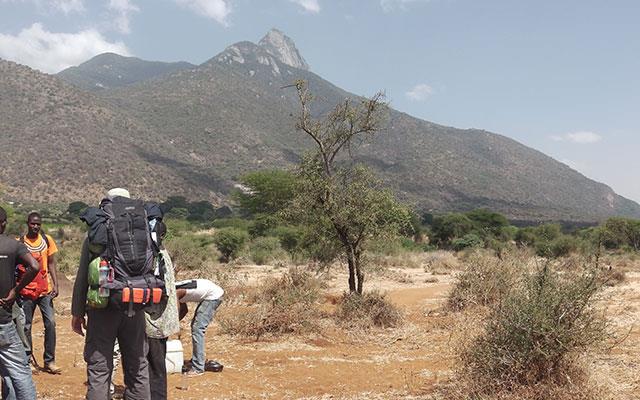
Some of the Tanzania iconic safari parks include the Serengeti National Park’s grasslands, a wildlife safari hotspot teeming with the “Big Five” — elephant, lion, leopard, buffalo, and rhinoceros — as well as Kilimanjaro National Park, the setting for Africa’s tallest peak. Offshore are the tropical islands of Zanzibar, which have Arabic influences, and Mafia, which have coral reefs and a marine park where whale sharks can be found.
The Swahili word “safari” came to represent an amazing excursion with a guide through some of the most beautiful landscapes on earth. In any case, traveling to Tanzania is no longer the major undertaking it once was. Today’s tourists have a variety of safari options, including hot air balloon safaris, horseback riding, walking safaris, and game drives safaris. Tanzania’s wildness never ceases to enthrall, and more creatures may be found in the Serengeti alone than anywhere else on earth. So, whichever approach you choose, we can assure you of a fantastic safari.
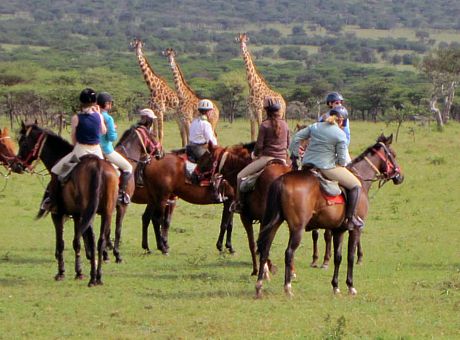
Tanzania is one of the most popular safari locations because you may view a variety of wildlife, including the last remaining primates in the world in the forested hills above Lake Tanganyika and unique species that are impossible to see anywhere else in the world.
Again, Tanzania is one of the best places to visit and promises some of the best wildlife photographic safaris on the continent thanks to the scenery, topography, and incredibly nice people. Tanzania truly has everything. Tanzania is home to 22 national parks, 1 conservation area, 27 game reserves, many marine parks, a stunning coast and Lake Zone, and gently undulating mountains that are a hiker’s dream.
How to visit Tanzania national parks and have unforgettable safari experience? Probably that is the question you and other many Travellers ask themselves. Here is our guide to the top national parks in Tanzania and the ideal times to visit them for better and fantastic safari experience:
Tanzania National Parks
Tanzanian national parks exist primarily to conserve the country’s vast wealth for present and future generations. These national parks includes:
Arusha National Park.
Gombe Stream National Park.
Katavi National Park.
Kilimanjaro National Park
Kitulo National Park.
Mahale Mountains National Park.
Lake Manyara National Park
Mikumi National Park
Mkomazi National Park.
Ruaha National Park
Rubondo Island National Park
Saadani National Park.
Serengeti National Park.
Tarangire National Park.
Udzungwa National Park.
Saanane National Park.
Burigi-Chato National Park
Ibanda-Kyerwa National Park
Rumanyika-Karagwe National Park.
Nyerere National Park.
Ugalla River National Park.
Kigosi National Park
BEST FOR GAME VIEWING SAFARIS.
Serengeti National Park
The focal point of the well-liked Tanzania northern safari circuit, this internationally famous park is home to several predators and the legendary migration of millions of wildebeest and zebra. Those with enough time and money are encouraged to visit the more remote west and north of this popular park because the southeast only experiences overcrowding.
Ruaha National Park
This southern counterpart to Tarangire was recently expanded and combines excellent elephant and big-cat views with a genuinely untrammeled bush ambiance. It is likely the most diverse of the southern parks in terms of large mammal and bird richness.
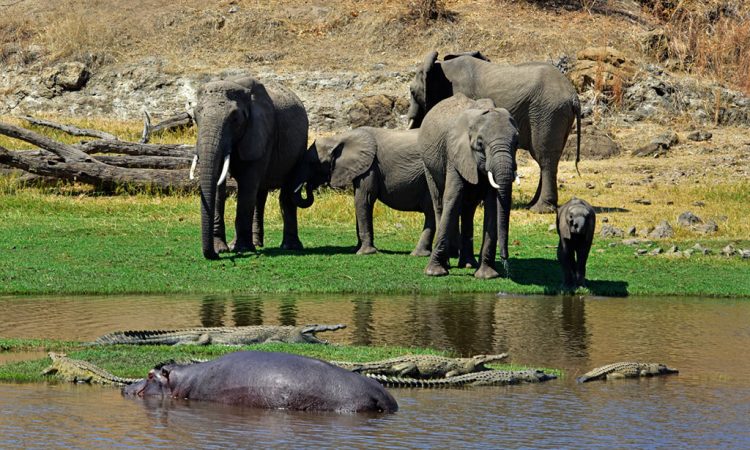
Mahale Mountain National Park
Mahale Mountains is without a doubt one of the most stunning national parks in all of Africa, and it is also regarded as one of the best locations in the world for chimpanzee tracking.
The Selous Game Reserve
This large reserve, which is dominated by the Rufiji River, is the only one in Tanzania where nearly all camps provide guided walks and boat trips in addition to game drives. It also provides the greatest opportunity in East Africa to witness the critically endangered African wild dog.
Tarangire National Park
Less well-known than the Serengeti and hence less visited by tourists, Tarangire preserves a classic section of dry savannah dotted with numerous baobab trees and home to enormous herds of elephants, among other animals.
Gombe Stream National Park
One of the few African national parks that can legitimately claim to be well-known in the western world is Gombe Stream. It is best renowned for its chimpanzees, or maybe more precisely, for the groundbreaking primatologist Jane Goodall’s studies of their behavior. But strangely, it nevertheless remains a quiet, far-off reserve, Ultimate Guide for visiting Tanzania National parks.
BEST FOR BIRD WATCHING SAFARIS.
Lake Manyara National Park
Good birding can be found across the northern safari circuit, but for first-time visitors to Africa, The region’s birding hotspot, Lake Manyara, provides a great opportunity to see over 100 species in a single day, including flamingos, storks, eagles, and barbets., Ultimate Guide for visiting Tanzania National parks
The Mikumi National Park
Mikumi, Tanzania’s fourth-largest national park, is never a main stop on travel itineraries. However, it is most definitely worth a night or two on any road safari in the south, and the park is home to more than 400 different species of birds.
Mkomazi National Park
The impressive birdlife, the wild scenery, with mountains rising in all directions and Kilimanjaro frequently visible to the northwest at dawn and dusk, and the almost certainty of not seeing another tourist make up for Mkomazi lack of comparable game viewing to other reserves in northern Tanzania.
Rubondo Island National Park
This forested island, which is located in the southeast corner of the enormous Lake Victoria, is home to a number of species that are only sparsely distributed elsewhere in Tanzania. African grey parrots and other forest dwellers compete for space with fish eagles, herons, and other water-associated species for attention.
BEST FOR HIKING SAFARIS.
Mount Kilimanjaro National Park
Every year, hundreds of people climb Kilimanjaro, the tallest mountain on the continent, to experience the otherworldly Afro-montane moorland ecosystem of the upper reaches, in addition to standing atop the continent’s snow-capped apex.
The Udzungwa Mountains National Park
This pedestrian-focused park offers the chance to stroll to numerous stunning waterfalls through lush woodland home to several rare monkey species and a variety of lesser endemics, protecting the largest of the Eastern Arc ranges.
Arusha National Park
Arusha National Park, the most accessible wildlife location in northern Tanzania, is an ideal target for a half-or full-day journey at the beginning of a safari. It is only 45 minutes’ drive from the named town. The imposing Mount Meru will draw climbers, but a collection of picturesque lakes can be discovered by non-hikers along the road or on guided canoe tours.
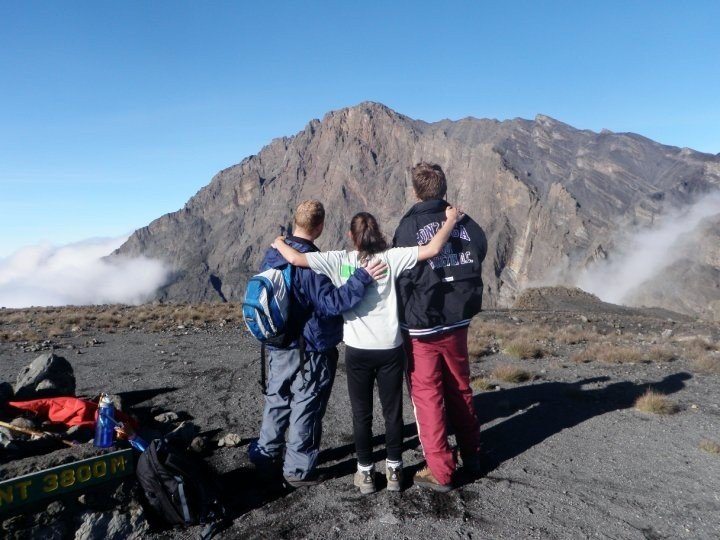
THE BEST OFF-THE-BEATEN-TRACK SAFARI PARKS
Katavi National Park.
As one of the few safari places where you’re more likely to spot lions than other people, Katavi preserves a really secluded wilderness aspect. Indeed, if any national park deserves the clichéd moniker of “Africa’s best-kept game-viewing secret,” it is Katavi, with its profusion of lions, elephants, huge herds of buffalo, and perhaps the highest density of hippos on the entire continent.
The Kitulo National Park
The newest national park in Tanzania, established in 2005, is also arguably it’s least well-known because it was the first of its kind in tropical Africa to be included largely for its floral value. The plateau, which is referred to locally as “Bustani ya Mungu” (God’s Garden) and internationally as the “Serengeti of Flowers,” is home to one of the greatest flower displays in the world from November to April, when 350 varieties of vascular plants burst into bloom.
Saadani National Park
Saadani is the only wildlife refuge in East Africa with a beachfront on the Indian Ocean. When compared to places like the Serengeti, Ngorongoro and Ruaha, the park maintains a low profile, and when it comes to traditional wildlife viewing, it is undoubtedly inferior to Tanzania’s best. Nevertheless, the abundant birds, boat rides up the picturesque Wami River, led forest walks, and the comparatively low number of other tourists make it a noteworthy stop.
THE BEST TIME TO VISIT TANZANIA NATIONAL PARKS
The best time to go on a Wildlife safari in Tanzania is from June to August. The breathtaking Mara River crossing takes place between June and July, when dry conditions attract more species to waterholes. However, outside of these months, the Great Migration continues to circle the Serengeti; all you have to do is follow its path. As a result, June through August are the best months for avoiding the sweltering heat. After the brief rains, January and February brought fewer automobiles and greener surroundings. You’ll see young wildebeest as well as other predators. In March and May, torrential downpours can disrupt travel plans and force many lodges in the distant south to close.
Again, visit Tanzania from December to February, when new zebra and wildebeest are born. You might get to observe these young animals take their first few steps during this time. Between the brief rains of November and December and the prolonged rains of March to May, certain parks in Tanzania also experience a brief dry spell in January and February.
Due to the Great Migration, the months of June to October can be busier than other times of the year, but because of the minimal rainfall throughout the winter, this is also the greatest period to witness the majority of the species congregating around remaining waterholes. During the migratory season, some parks, like the Serengeti, become congested, while others are quite peaceful year-round, Ultimate Guide for visiting Tanzania National parks
When Is the Best Time to Watch Birds?
Tanzania has a healthy bird population all year long, but from November to April, when migrating birds from northern Africa and Europe are present, is when it is most abundant. Numerous local bird species are currently nesting or in breeding plumage. The wettest months are March and April, when storms might occur daily in some regions of the nation. The warmest time of the year also falls during the wet season. On the seaside, this can result in uncomfortable heat. It’s best to watch wildlife during the dry season.
TANZANIA NATIONAL PARKS PACKING LIST: WHAT TO PACK WHEN VISITING TANZANIA NATIONA PARKS?
General Packing List
In general, don’t over pack. Allow space for gifts and mementos. Soft-sided luggage fits into the safari van more readily.
Always keep your passport, flight tickets, and cash on hand. It’s best to use a moneybag or fanny pack that hangs around your neck.
Place enough clothes and supplies in your carry-on bag for the first two to three days just in case your luggage doesn’t arrive the same day as you do.
If traveling on a domestic flight, the maximum combined luggage weight per passenger is 15–20 kg.
Additional equipment will be required if climbing Mount Kilimanjaro or Mount Meru. Refer to the Kilimanjaro packing list if necessary.
For nighttime relaxation, pack sandals or tennis shoes.
Socks that are cozy and breathable.
Mid-thigh or longer shorts (not advisable for village visits).
Pants that are thin and breathable.
Shirts with short sleeves that are airy and cool (neutral colors are best; avoid black, dark blue, and bright red).
A bathing suit if visiting Zanzibar or staying at a lodge with a pool.
Sweater or fleece with long sleeves for the evenings or mornings.
Rain poncho or rain jacket
When visiting villages, women should wear long pants and shoulder-covering shirts. Depending on how remote the hamlet you visit is, light dresses or skirts that cover the knees are optional. These outfits can also be worn for evening meals at the lodging.
Men should wear collared short-sleeve shirts (for visiting villages or evening dining at the accommodations).
Minimize the wearing of expensive jewelry, Ultimate Guide for visiting Tanzania National parks.
HOW MUCH DOES A TANZANIA NATIONAL PARK SAFARI COST?
Tanzania is easily the best safari destination because it is home to the Serengeti National Park and Ngorongoro Crater. Tanzania is regarded as the best safari destination in the world, yet contrary to popular belief, it is not as pricey as it sounds because you get more for your money than you bargained for.
It is undeniable that there are many other areas besides the Serengeti and Ngorongoro. Tanzania is a privileged nation with many national parks and is a highly uncommon tourist destination because it contains everything the globe has to offer, including the most exotic beaches and free-standing mountains.
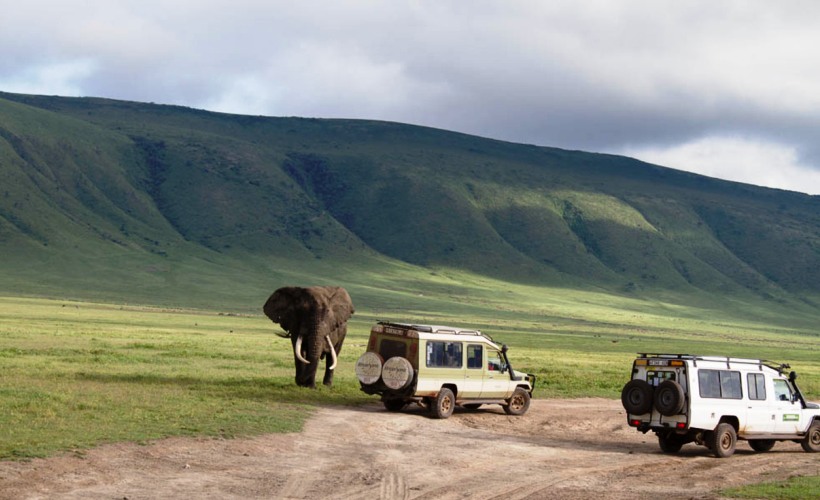
Serengeti National Park, the Ngorongoro Crater, Tarangire National Park, Lake Manyara National Park, Arusha National Park, Ruaha National Park, Udzungwa Game Reserve, Burigi National Park, and many other national and game reserves may all be visited while you are in Tanzania. Tanzania is the pinnacle of a safari for a traditional and top-notch animal viewing location.
A budget safari can cost as little as $350 per day or as much as $2,700 for a deluxe safari. The fee given includes transportation, lodging, activities, and all National park entrance fees. Luxury Tanzanian safaris costing at least $1,500 per day are another option if you want to spend significantly more on your ideal African safari experience. Fortunately, Focus East Africa Tours offers Tanzania safari packages for every price range, ranging from affordable top-end safaris where the sky’s the limit to pricey top-end safaris costing $350 to $2,100 per person per day.
Below is a cost split of what exactly a client is paying for. With our years of experience in the field of travel and tourism, this is where the cost is derived from.
Rent a safari vehicle and private guide
Entrance fees for the national parks
Meals and lodging
You can persuade your friends to go on a safari with you so that you arrive as a group rather than a solitary traveler, unless you decide to share the safari vehicle with them, which is highly recommended for you to save some money. If you want to use a private vehicle, the entrance fees to national parks are expensive and vary from park to park. For instance, the cost of using a safari jeep in the Ngorongoro Crater is $300 per day. On the other hand, depending on the level of luxury or exclusivity you select, you may be able to save money on lodging when travelling in a group.
What are the factors that determine the Tanzania National Park safari cost?
Duration (length of stay)
Accommodation type (budget, mid-range, or luxury)
The number of Travellers
Transfers and extra cars
National park you visit
Season of the year.
Tourist activities: What to do in Tanzania’s National Parks
Balloon Safari: Serengeti National Park visitors have the chance to experience flying in a hot air balloon to obtain a unique perspective of the park.
Walking safaris: Experiment with nature without a car.
Horseback riding safari: Saddle up and enjoy the beauty and wildlife of Arusha Park. The pleasure of participating in this unusual activity is incredible. Please visit and take advantage of this unique opportunity.
Sport fishing: Visitors to the Rubondo Island National Park, which is located on Lake Victoria, will have the chance to go sport fishing there.
Have you ridden a bicycle across Kilimanjaro? Enjoy the rush of cycling toward Africa’s tallest peak and taking it on. The experience is truly priceless.
Bush meals: Enjoy delicious meals in the heart of the wild in the Serengeti, a renowned national park. One opportunity for park visitors in this beautiful and wildlife-rich area is to hunt for food in the wild.
Game drives: Serengeti National Park’s main tourist attraction is vehicle-based game watching. Visitors have the best chance to witness wild creatures with ease thanks to a well-designed and carefully chosen network of roads and circuits. Being able to comfortably view wildlife in its natural habitat while traveling in a game vehicle is an adventure in and of itself.
Canopy walks: One of Lake Manyara National Park’s special features is the ability to traverse the park’s underground water forest’s canopies. Visitors can get a bird’s-eye view of the creatures below while they are up in the canopy.
Hiking safaris: Hike the beautiful hills in the park to discover the beauty of Kitulo Garden of Flowers. Hiking in this special park gives you the chance to experience nature at its most enjoyable.
Mount Meru, the second-highest mountain in the nation, is located in Arusha National Park. This mountain offers the chance for mountaineering, which some people view as an exercise towards climbing Kilimanjaro, the highest mountain in Africa.
How to stay safe when visiting Tanzania national parks? Simple tips, advice and guidelines for staying safe when in Tanzania safari vocation visiting National parks include the following:
Always heed the advice of your safari guide.
Until your guide indicates that it is safe to exit the safari vehicle, remain inside at all times.
Never stick your head out a window or hang your arms outside the car; instead, remain seated and keep them there.
Never leave the safari vehicle while in need of a bathroom break; instead, ask your guide where to go before venturing out into the bush, Ultimate Guide for visiting Tanzania National parks.
When you see animals, be quiet so you don’t startle them or the other safari travelers.
Children should not make loud noises or shout while riding in safari vehicles.
On a walking safari, keep close to your guide; maintain a single line and follow the group.
To avoid getting bitten by mosquitoes, cover your arms and legs with long pants and long-sleeved shirts in the evening, and use an efficient insect repellent all day, Ultimate Guide for visiting Tanzania National parks.
To avoid sunburn, put on a wide-brimmed hat and apply sunscreen.
For hydration, sip a lot of bottled water.
If you’re going on a walking safari, avoid wearing bright or colorful clothing because you don’t want to attract the attention of wild animals, Ultimate Guide for visiting Tanzania National parks.
Before going on a game drive, use a light deodorant and stay away from perfumes with a strong scent.
For the early morning and nighttime drives—which can be chilly even in the height of summer—bring a heavy jacket, a beanie, and gloves.
Never Stick Anything Out of the Car: Most of the safari cars in Tanzania have open tops. The presence of vehicles and the people within them is familiar to the wildlife.
Don’t Run: In Africa, only the prey moves quickly. You do not want to be pursued by a predator.
While on a walking safari, if you come across a wild animal, go away very slowly. It might be exciting and fun for you.
Don’t use or possess drugs while you’re in Tanzania because doing so is against the law and can result in steep fines and even jail time.
Be careful what you shoot in Tanzania because it is illegal to capture images of the military, governmental structures, or border crossing points. Ask your tour guide if you can snap a picture of something if you’re not sure if it’s okay to do so.
ACCOMMODATION FACILITIES IN TANZANIA NATIONAL PARKS
There are many accommodations inside the parks so you need no to worry about where you will be staying when visiting Tanzania national parks. These establishments offer lodging services to a variety of visitors or tourists who are visiting the parks. Either a park or a private company owns the facilities. The five types of lodging that are available in Tanzania National Parks Includes campsites, rest houses (Bandas, huts, cottages, and guest rooms), park-owned tented camps, hotels, and hostels.
CAMPSITES
A camping site is an area that has been set aside for overnight camping by visitors. According to each park’s current General Management Plan, these zones have been identified. Tanzania National Park Authority-TANAPA oversees a variety of camping facilities, including public, exclusive, temporary, and flying camps.
Public campsite
These are campsites that are frequently used by multiple tour groups. The park is responsible for making sure that the campsite has access to a kitchen, eating area, shelter, camping pads, parking area, dustbins, a fire break, toilets, water, and power supply (lighting and charging), Ultimate Guide for visiting Tanzania National parks.
Special campsite
There are no permanent buildings of any kind, no permanent toilet structures of any kind, and only temporary tented camps that can accommodate one group at a time. Instead, camping practices that blend in with the environment must be adopted. Visitors have the right to use the campsite exclusively if one group is using it at the time and is preventing another group from using it. The tour operators are required to clean up all trash.
Seasonal Campground
These are short-term tent camps that stay in one location for at least one season (3 months), and they lack any kind of permanent restroom infrastructure, including concrete platforms. Seasonal campsites must operate in accordance with the corresponding seasonal camping contracts and the TANAPA campsite booking policies.
Fly Campground
This is a unique and daring kind of lodging provided on lengthy walking safaris. They are available as a component of the walking safari. The visitors walk to the fly camp in the afternoon with an armed ranger/guide at their side.
LODGES
These are the most well-known and liked kind of accommodations in Tanzania national Parks and they are categorized into main three groups including Luxury lodges, budgeted lodges, and mid-range lodges.


